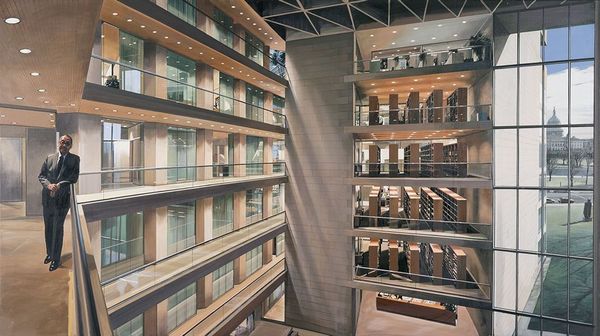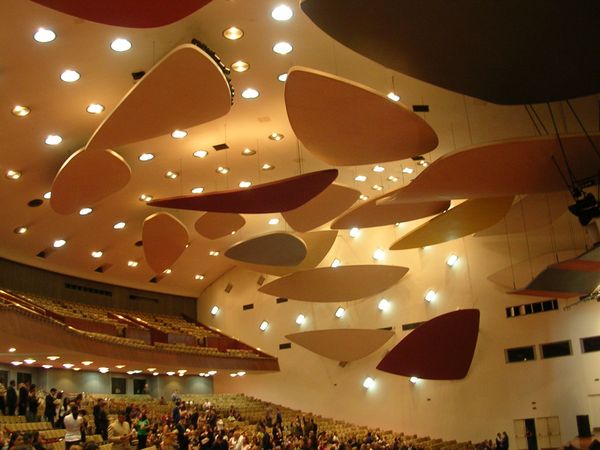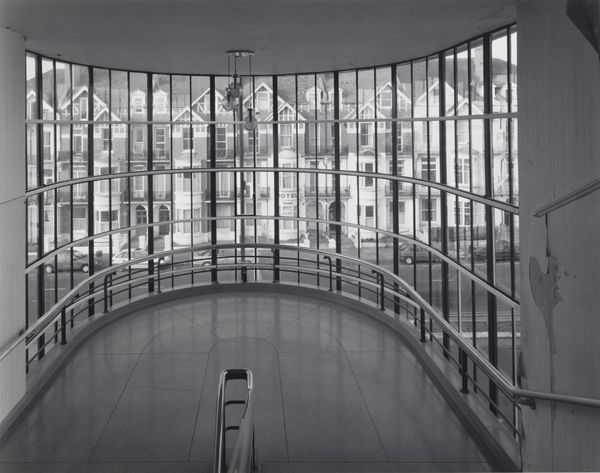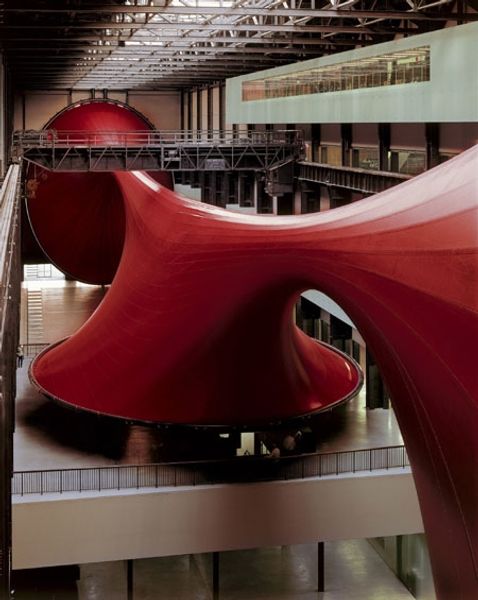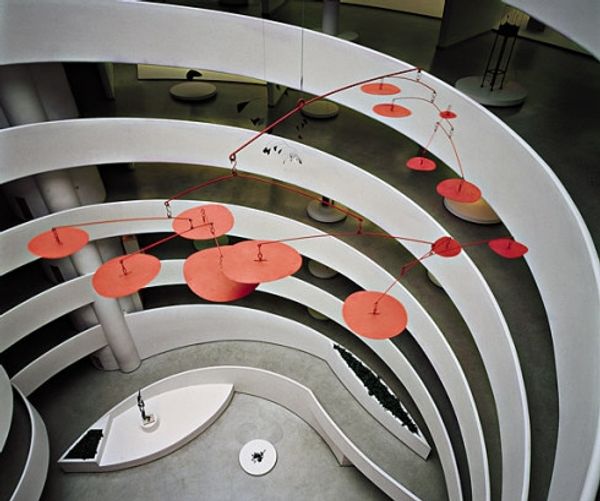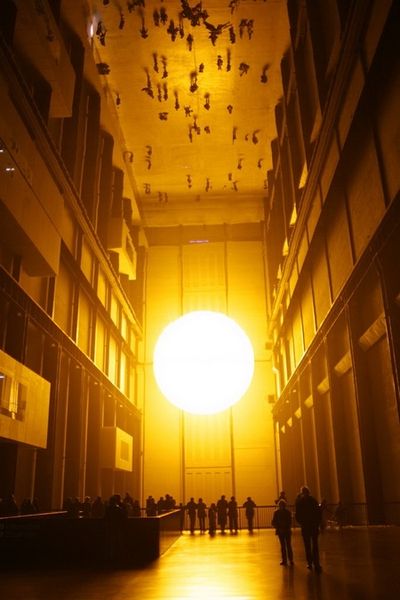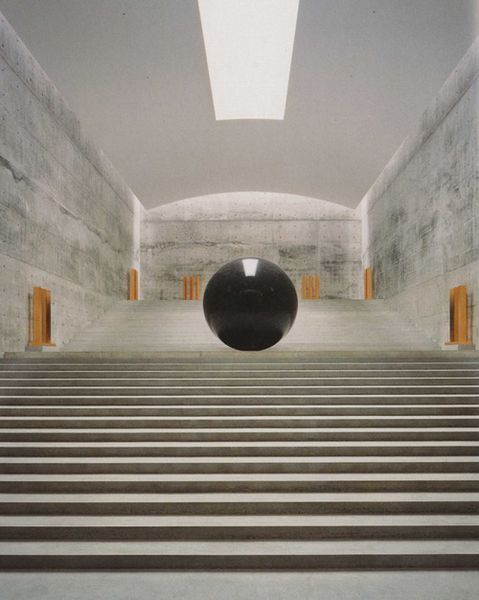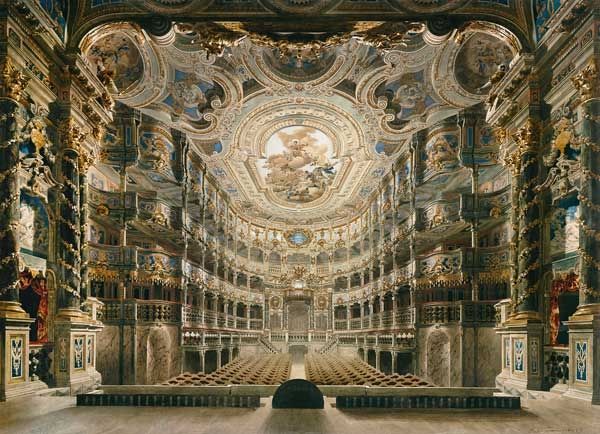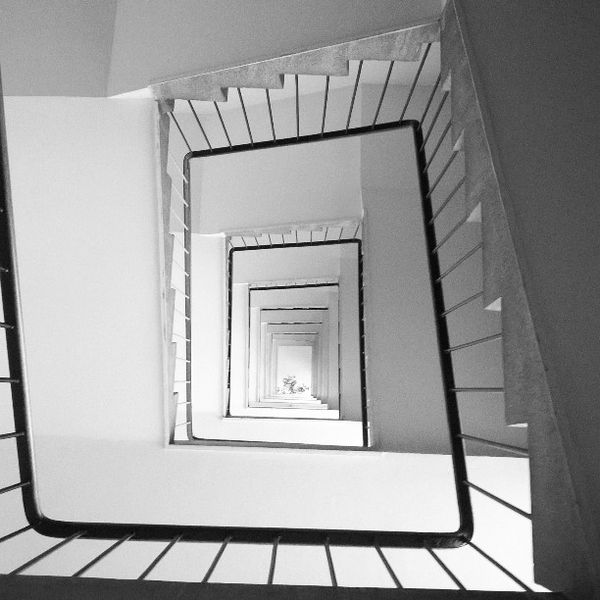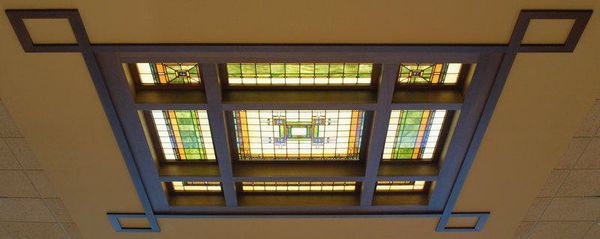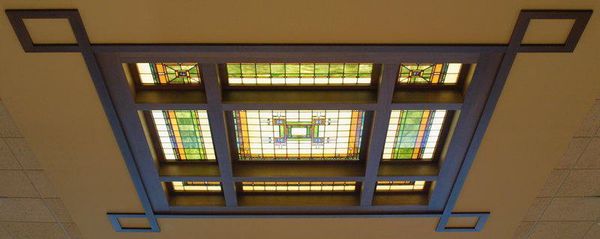
photography, architecture
#
contemporary
#
architectural photography
#
photography
#
geometric
#
architecture
#
line
#
cityscape
#
architecture
Copyright: Andreas Gursky,Fair Use
Editor: Andreas Gursky's "Shanghai," from 2000, is a stunning photograph focused on architecture. The dizzying height of the interior, with its curved balconies, gives me a sense of being overwhelmed. What do you see in this piece? Curator: I see a reflection of global capital and its impact on urban landscapes. Gursky’s work often examines the relationship between individuals and massive systems. Think about the period: 2000. Shanghai was experiencing an economic boom. How might this architectural image speak to that moment? Editor: I guess the repetitive, almost clinical, nature of the balconies reflects the mass production and consumerism of that era? There's also the issue of how few people are visible—makes you feel really small. Curator: Precisely. And that feeling of smallness speaks to the individual’s position within these large systems. How does the lack of individuality reflected in the architecture relate to issues of identity and even social control, considering the political landscape in China at that time? Editor: That's a powerful point. The geometric shapes, when separated from their geographical and political context, seem purely aesthetic. It is the backstory that shapes our interpretations. Curator: Exactly! By engaging with the socio-political context, we can see how Gursky’s images function as critical commentary on globalization, power, and individual experience. The photograph transcends pure aesthetics and enters the realm of social critique. Editor: It is an intense approach. Thank you. Looking at it with the historical context in mind truly enhanced my perspective of Gursky's "Shanghai". Curator: Indeed, it provides tools that enable one to recognize both overt and subliminal patterns in the visual culture and political stage.
Comments
No comments
Be the first to comment and join the conversation on the ultimate creative platform.
